Growing a small business can feel confusing when you have a dozen different priorities competing for your time. This guide will walk you through how to grow a small business in a practical way you can apply over the next year.
You’ll learn how to understand your customers, improve your offer, build a simple marketing system, and use reviews, systems, and automation to support sustainable growth.
1. Understand Your Best Customers
Understanding your best customers helps you grow faster by focusing on the people who already value your business the most. These people usually buy more often, spend more per purchase, and refer others.
When you know who they are and what they care about, it becomes much easier to shape your marketing, pricing, and services around what works.
Here are several practical ways to identify your best customers and learn from them:
- Pull a list of your customers from the past twelve months and sort it by revenue: This helps you see who drives the majority of your income and gives you a clear starting point for deeper analysis. Looking at total spend also reveals which services or products matter most to your highest-value customers.
- Look for patterns among your top customers: You may notice that certain industries, neighborhoods, or customer types appear repeatedly. These patterns help you refine your target audience and focus on the people most likely to buy from you again.
- Have short conversations with a few of your highest-value customers: Ask them what problem they were trying to solve, why they chose you, and what they value most about working with you. Listening to their exact wording gives you language and insights you can use in your website copy and marketing.
- Use a short customer survey to gather additional insights: Tools like Google Forms or Typeform make it easy to collect information about buying criteria, demographics, and how customers found you. Keeping the survey brief increases the likelihood that more people will complete it.
- Use what you learn to create a clear picture of your best customers: This picture should influence how you write your website content, which services you highlight, and which neighborhoods or customer groups you prioritize. When you tailor your messaging and offers to the people who already respond well to your business, marketing becomes easier and more effective.
Brandi Simon, owner of TX Home Buying Pros, saw her business grow faster the moment she focused on one specific group:
I stopped trying to be everything to everyone and focused only on distressed properties. I started calling homeowners facing foreclosure myself, showing them how to stage their house for a quick sale.
The houses moved faster, and I started getting calls from their neighbors. Seeing that look of relief on their faces told me everything.
My advice is find one specific, urgent problem you can solve better than anyone else.
2. Strengthen Your Offer
Strengthening your offer makes it easier for the right customers to say “yes” without relying on heavy selling. Your offer is more than just the product or service you deliver.
It includes your pricing, your process, your promise, and the amount of risk a customer feels before they buy. When your offer is clear and simple to understand, every part of your marketing becomes more effective.
Here are practical ways to strengthen your offer so customers feel confident choosing you:
- Write out your current offer in plain language: Describe exactly what is included, what isn’t, how it’s delivered, and what it costs so the offer is easy to understand. If a stranger can’t grasp the value in a few seconds, refine the wording and remove options that create hesitation or confusion.
- Simplify your structure so customers can choose faster: Multiple tiers, add-ons, or unclear descriptions can make people feel uncertain, which slows down buying decisions. A simple, focused offer reduces friction and increases the likelihood that customers will commit quickly.
- Increase perceived value without adding major costs: You can bundle complementary services, include a short onboarding call, or provide a helpful checklist or guide that improves the customer’s results. These additions make your offer feel more complete while requiring little extra work on your part.
- Use guarantees and clear policies to lower customer risk: A straightforward refund or redo policy helps customers feel safe moving forward, especially if they are choosing between multiple businesses. When risk is reduced, trust rises, and customers feel more confident purchasing from you.
- Review and update your offer once a year: Customer expectations change, and your services may evolve as your business grows. Revisiting your offer regularly ensures it continues to be relevant, competitive, and aligned with what your best customers want.
When you understand the points where customers hesitate or feel confused, you can simplify your offer so it feels easier to choose. Small shifts, like clearer pricing, fewer options, or a better explanation of benefits, often lead to meaningful improvements in conversions and retention.
Mark Spivak, founder of Comprehensive Pet Therapy (CPT), saw this firsthand:
At CPT, we bundled group classes and private sessions into simple packages. Clients kept getting stuck on what to buy, so we created a few clear price tiers.
The hesitation disappeared. People signed up and they stuck around longer.
My takeaway? Figure out exactly where your customers get stuck and remove that one obstacle for them. It works.
3. Improve Your Online Presence
Improving your online presence makes it easier for potential customers to find you, understand what you offer, and contact you. In many markets, your website and business listings act as the first impression people have of your company.
A clear, accurate, and trustworthy online presence reduces confusion and builds confidence before someone reaches out. The stronger and more complete this presence is, the easier it becomes to convert visitors into inquiries.
Fix Your Homepage So Visitors Immediately Understand Your Business
Your homepage should make it clear who you are, what you do, and who you serve within the first screen a visitor sees. A short description of your main services helps people quickly decide whether your business is relevant to their needs.
Adding a clear call-to-action, such as “Call now” or “Request a quote,” guides visitors toward the next step. Basic trust elements like testimonials, certifications, or recognizable logos help people feel more confident about choosing you.
A simpler website almost always performs better than a complicated one. When people can understand your offer quickly and see exactly what to do next, they’re far more likely to contact you or make a purchase.
Mike Wall, founder of We Buy Gulf Coast Houses, saw this play out on his own site:
We stripped our website down to the basics so homeowners could understand our process in seconds.
We cut the filler content, added a clear button for a free consultation, and the serious inquiries increased almost immediately.
It showed me that people respond to directness. They don’t need clever marketing, they just need you to be straight with them.
Improve Your Google Business Profile To Increase Local Visibility
Your Google Business Profile is the listing that appears in Google Search and Google Maps, and it often influences whether someone contacts you.
Make sure your business name, address, phone number, website, hours, and categories are complete and accurate. Upload high-quality photos of your storefront, products, or team so potential customers can see what to expect.
A complete and active profile increases trust and helps you show up more often when people search for businesses like yours.
Keep Your Business Details Consistent Across All Directories
Many customers also discover local businesses through directories like Yelp, Facebook, and local industry sites. Your name, address, and phone number should match across every platform, because inconsistencies can confuse customers and reduce credibility.
Search engines rely on consistent information to verify that your business is legitimate. When everything matches, it becomes easier for customers to find and contact the right location without mistakes.
Review Your Website Content And Answer Common Customer Questions
Your website should explain your services clearly, including what you offer and how your process works from start to finish. If appropriate in your industry, include pricing ranges so customers understand what to expect before contacting you.
Add clear steps for how someone can get started, whether that involves calling, filling out a form, or booking online. The clearer your content is, the fewer repetitive questions you’ll receive, saving you time and improving customer experience.
4. Use Reviews And Social Proof To Support Growth
Using reviews and social proof helps you turn customer experiences into a steady source of new business. Reviews influence both how often people find you and whether they feel comfortable choosing you.
According to our State of Online Reviews research, 92.5% of buyers have read an online review in the past year, and more than 78% will not consider a business with a rating below four stars.
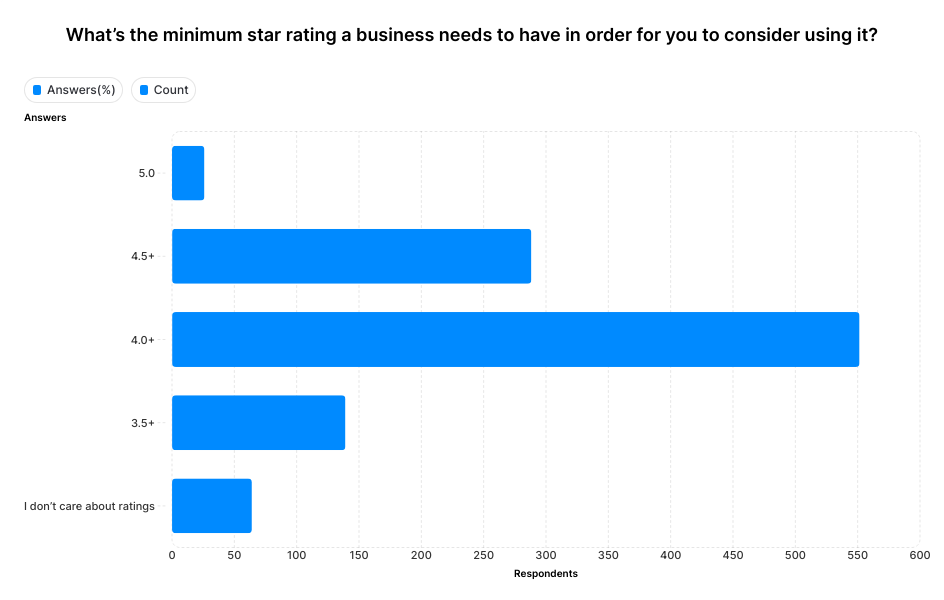
This means your reputation is a core growth channel, not a side task.
Ask For Reviews Consistently
Many happy customers are willing to leave reviews if you make it simple and timely. Build a basic process that triggers a review request shortly after a positive interaction, such as finishing a project or delivering an order.
You can use email or text messages to ask for reviews, and both work well when done consistently.
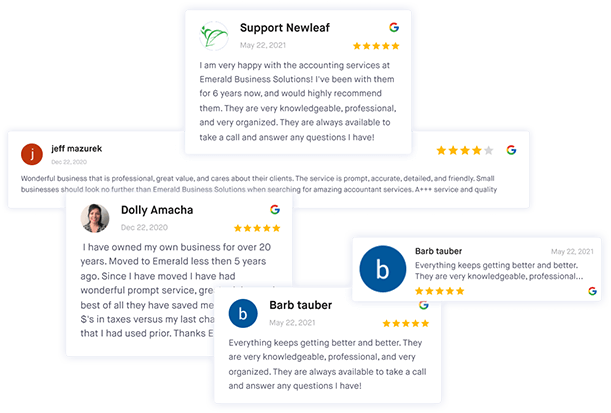
Manage your business's reviews with ReviewsOnMyWebsite
Get more 5-star reviews and take control of your online reputation with ReviewsOnMyWebsite.
According to our State of Online Reputation Management report, 69% of businesses request reviews by email, which shows how common this approach is.
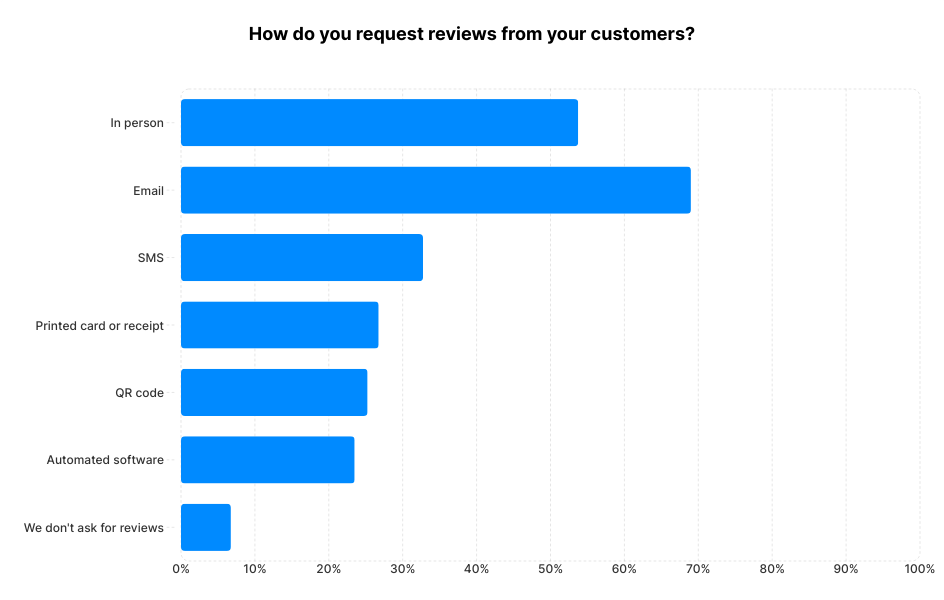
Pro tip: You can use ReviewsOnMyWebsite to send automated email and SMS review request sequences, reminding customers to leave a review.
Display Reviews Where They Matter Most
Once you have reviews, make sure they’re visible where potential customers are deciding whether to contact you. Place recent, relevant reviews on your homepage, service pages, and contact page so visitors see proof that you deliver on your promises.
You can use ReviewsOnMyWebsite’s review widget to display customer reviews on your website pages. All you need to do is add a short snippet of code to your site.
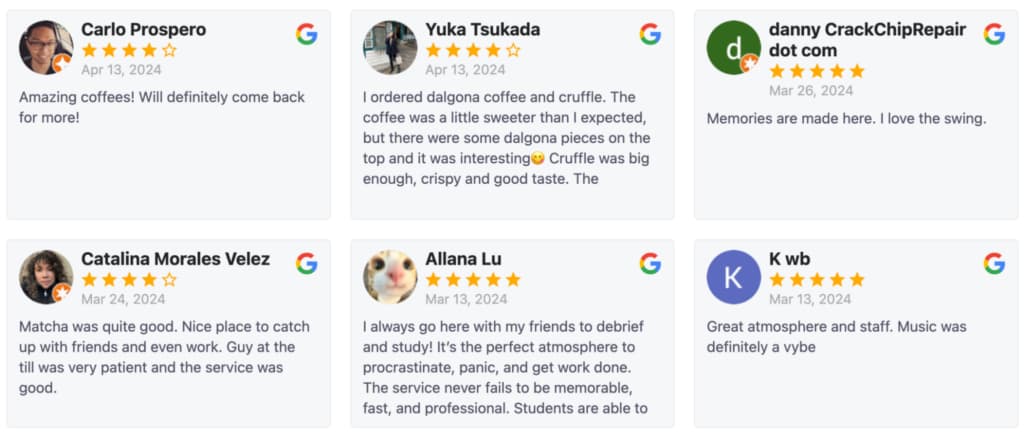
Respond To Reviews
Responding to reviews shows you listen and care. In our research, 78.3% of buyers say seeing a thoughtful response to a negative review makes them more likely to trust a business.
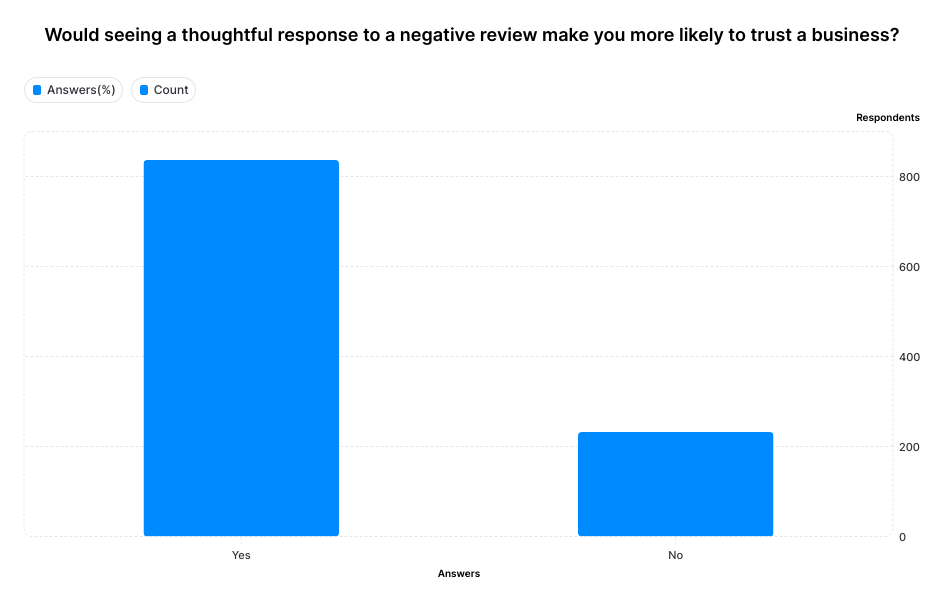
You can use ReviewsOnMyWebsite’s AI-powered review response feature to generate personalized review replies in seconds.
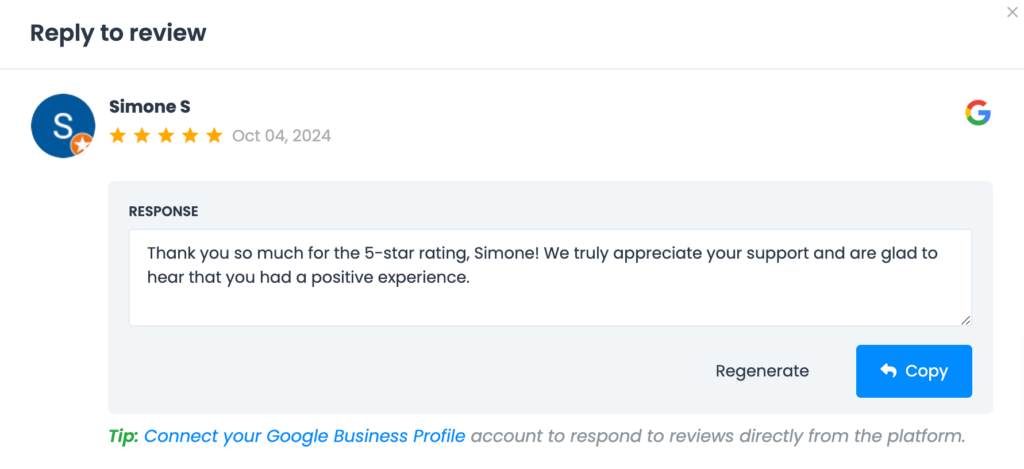
5. Increase Revenue From Existing Customers
Increasing revenue from existing customers is often the fastest and least expensive way to grow your small business.
These customers already know you, trust you, and understand the value you provide, which means they’re more likely to buy again if you give them a clear reason to do so.
By focusing on follow-ups, bundles, loyalty incentives, and simple tracking, you can create steady, predictable growth from the customers you already have.
Here are practical ways to increase revenue from your existing customer base:
- Identify one-time buyers from the past year and look for natural follow-ups: Review your customer list and highlight people who only purchased once, then determine whether there’s a service or check-in that would benefit them. This approach allows you to re-engage warm customers who may simply need a reminder or a small nudge to return.
- Set up reminders for services or products that require periodic maintenance or renewal: Some offerings naturally need follow-up, such as annual inspections, seasonal tune-ups, or product replacements. Setting automatic reminders helps you stay top-of-mind and creates consistent repeat business without extra manual effort.
- Create simple bundles that increase average order value: Combine related products or services into packages that make sense for your customer and feel like a natural upgrade. Bundles work best when they offer true convenience or savings, not pressure, which helps customers feel they’re getting more value.
- Offer clear, helpful add-ons at the point of sale: Add-ons should complement what the customer is already buying, making their purchase better or easier. When presented as genuine enhancements rather than upsells, customers are more likely to say yes.
- Introduce a straightforward loyalty program to reward repeat customers: You can use punch cards, point systems, or VIP discounts to encourage customers to return more often. Simple rewards help customers feel appreciated and reinforce long-term relationships.
- Track how much of your revenue comes from repeat customers: Monitoring this percentage each month helps you see whether your retention efforts are working. When repeat revenue grows steadily, your business becomes more stable and less dependent on new customer acquisition.
Staying in touch with past customers without trying to sell them anything can be one of the simplest ways to generate repeat business and referrals. A short check-in or friendly message often does more to build loyalty than any promotion or campaign.
Carl Fanaro, founder of NOLA Buys Houses, put this into practice with great results:
We started calling past clients a few months after closing, just to say hello. No sales pitch, just asking how they were doing.
That small move brought in more referrals than any marketing we paid for. People appreciated that we actually remembered them. Turns out, keeping it simple and consistent brings in more business than any fancy plan.
6. Build A Simple Marketing System You Can Maintain
Building a simple marketing system you can maintain is more effective than constantly trying new tactics.
A clear structure with a few repeatable actions helps you stay consistent, and consistency is what creates long-term growth.
Instead of doing everything, you focus on doing the right things well.
Here are three core elements that form a simple and effective marketing system:
Choose One Primary Acquisition Channel You Can Commit to
Your acquisition channel is the main way you get in front of new people, so it needs to match your strengths and where your customers already spend time.
This could be local search, a specific social media platform, partnerships with nearby businesses, or participating in local networking groups.
According to the State of Small Business Marketing report, about 40% of businesses spend 6–10% of their revenue on marketing, which shows that limited budgets are common.
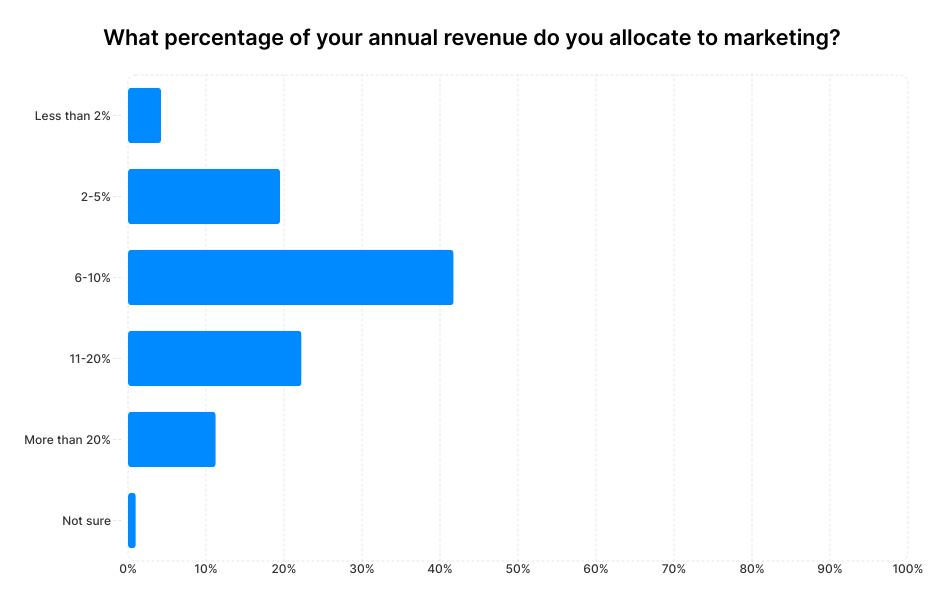
Focusing that budget on one channel gives you a better chance of seeing results than spreading it thin across several platforms. When you choose a single channel and stay consistent, you build momentum much faster.
Brooks Humphreys, founder of 614 HomeBuyers, did exactly this:
We started hanging out in local Facebook groups, just sharing quick market tips and answering questions. We never tried to sell anything.
After a while, people started seeing us as a resource, not just another agent. It felt more like being part of the neighborhood, but leads started coming in.
My advice? Before you spend big on ads, try just showing up in community forums and being helpful. It works.
Use a Simple Nurture Channel to Stay Top of Mind
A nurture channel helps you stay connected with people who are interested in your business but may not be ready to buy yet.
A monthly email newsletter works well because it allows you to share practical tips, small updates, and seasonal offers without overwhelming your audience.
Staying in touch increases trust and helps customers remember you when they do need help.
Because many people shop around before making a decision, being the business they recall first gives you a clear advantage. Over time, this consistent communication becomes a valuable long-term asset.
Build a Clear Referral Step Into Your Customer Experience
Referrals often come from your happiest customers, but they tend to happen more often when you make the process intentional.
Decide the moment when asking for a referral feels natural, such as after completing a successful project or receiving a positive review. Prepare a simple script for what you will say so the request feels comfortable and easy.
You can offer a small reward, such as a discount or gift, to thank customers who send new business your way. This small step reinforces loyalty and turns satisfied customers into steady advocates for your business.
7. Use Systems And Automation To Save Time
Using systems and automation helps you handle more business without increasing your workload at the same pace.
Many small business owners are moving in this direction, and according to the State of Small Business AI Adoption report, 87% of small business leaders use AI regularly as part of their operations.
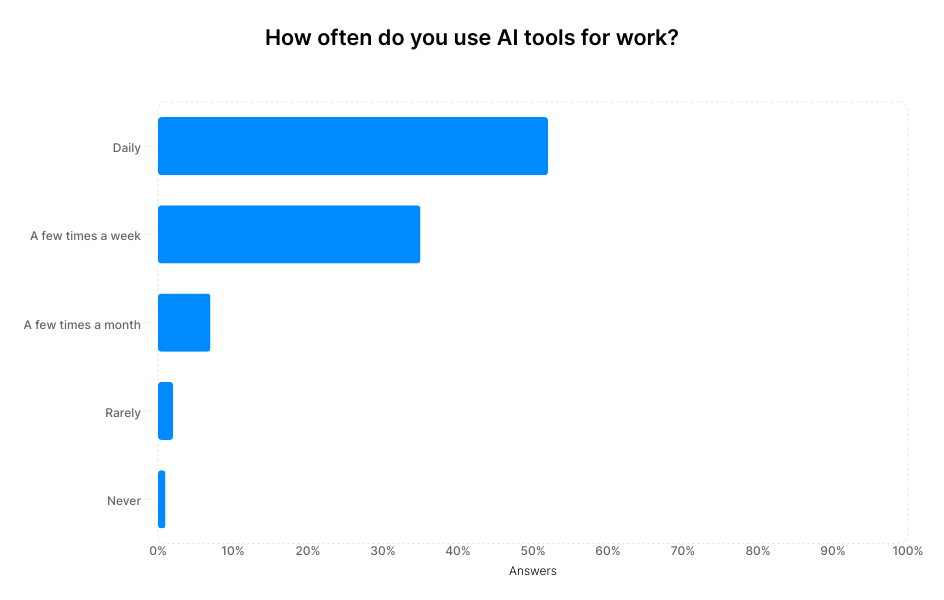
When you streamline the tasks you repeat most often, you free up time to focus on higher-value work and customer relationships.
Here are practical ways to put systems and automation in place:
- List all the repetitive tasks you complete each week: These usually include appointment scheduling, sending quotes or invoices, answering common questions, and requesting reviews. Writing these tasks down helps you see where your time goes and makes it easier to choose what to streamline.
- Identify which tasks are strong candidates for automation: Look for tasks that follow the same steps every time and don’t require judgment or a personal touch. These tasks are the easiest to automate and will give you time savings immediately.
- Use software tools to automate scheduling, billing, and follow-ups: Online booking tools can confirm appointments automatically, invoicing tools can send reminders, and email tools can deliver welcome or follow-up messages at the right time. Many of these tools connect with your existing website or accounting system, so setup is often simple.
- Lean on AI tools to reduce time spent on writing and administrative tasks: Our research shows that 61% of respondents cite saving time and automating repetitive tasks as the main reason for adopting AI. You can use AI tools to draft emails, summarize long documents, or create first drafts of social posts and review responses, then refine them to match your style.
- Start with one or two high-impact automations before expanding: Choosing small, simple automations prevents overwhelm and helps you see results quickly. Once those systems are working smoothly, you can gradually automate more tasks as you become comfortable.

Manage your business's reviews with ReviewsOnMyWebsite
Get more 5-star reviews and take control of your online reputation with ReviewsOnMyWebsite.
8. Build A Small, Efficient Team
Building a small, efficient team allows you to step out of day-to-day tasks and spend more time on activities that drive growth.
You don’t need a big staff. You need the right people doing the right tasks at the right time.
When you build a team around strengths rather than titles, your operations become smoother and easier to scale.
Here are practical ways to build a small team that supports long-term growth:
- List everything you do in a typical week and separate high-skill tasks from low-skill tasks: Tasks like pricing decisions, managing key customer relationships, or approving major projects usually require your experience and judgment. Basic admin work, scheduling, and routine customer service can often be handled by someone else.
- Use the lower-skill task list to determine what to delegate first: These are the tasks that take time without requiring your expertise, which makes them ideal for offloading. Delegating them frees up hours each week and allows you to focus on work only you can do.
- Choose the right type of support based on your budget and current stage: A part-time assistant, freelancer, or flexible employee can often handle several responsibilities without adding full-time payroll cost. Sometimes the best solution is reorganizing responsibilities among existing staff so each person works closer to their strengths.
- Document your core processes so delegation becomes easier and more consistent: Simple checklists or short guides for tasks like onboarding customers, sending quotes, or closing out jobs help reduce mistakes. They also make training faster, which is especially helpful when roles change or new people join.
- Invest in training so your team has the confidence to handle more responsibility: When people understand exactly how to communicate with customers, follow procedures, and solve common problems, they work more independently and make fewer mistakes. Training also helps create consistency, which is important as your business grows and more tasks shift away from you.
Create A 90-Day Growth Plan
Creating a 90-day growth plan helps you turn ideas into actions you can complete in a realistic time frame. Shorter planning cycles also make it easier to adjust if something isn’t working.
Start by revisiting your main goal for the next year and choosing one focus for the next 90 days. This might be increasing leads, improving conversion rates, boosting repeat business, or stabilizing your operations so you can handle more demand.
Then choose three projects that directly support that focus. For example, if your focus is more leads, your projects might be improving your Google Business Profile, publishing new service pages on your site, and setting up a basic email newsletter.
If your focus is retention, your projects might be launching a follow-up email sequence, creating a simple loyalty program, and improving how you handle negative reviews.
For each project, outline the steps required, who is responsible, and when the work should be finished. Use your calendar or project management tool to schedule these tasks so they don’t stay on a wish list.
At the end of 90 days, review what you completed, which metrics changed, and what you learned. Use those insights to shape the next 90-day plan. This cycle keeps you moving forward without feeling like growth is an endless, overwhelming project.
Small Business Growth Checklist
We created a complete checklist that turns every major part of this guide into simple, actionable steps.
Instead of trying to remember what to do next or guessing which tasks matter most, you can follow this list to improve your customers, offer, marketing, operations, and systems one step at a time.
Use it as a working document: complete one or two items each week, share it with your team, or build it into your 90-day plan.
Frequently Asked Questions About Growing A Small Business
What Is The Best Way To Grow A Small Business With A Limited Budget?
When your budget is limited, focus on improving what already works instead of trying many new channels at once.
Start by strengthening your offer and making your website and listings as clear and trustworthy as possible, then focus on retention and referrals from existing customers.
Choose one main marketing channel that fits your audience and commit to consistent activity there, such as weekly posts or a monthly email. Finally, track basic numbers like leads, conversion rate, and repeat purchases so you can see which efforts actually move the needle.
How Long Does It Take To Grow A Small Business?
There is no single timeline for growing a small business, because it depends on your industry, location, margins, and starting point.
Some businesses see meaningful improvements in a few months once they focus on a clear offer, simple marketing activities, and better customer retention. Others take a year or more to rebuild their foundations before growth feels steady.
How Can I Grow My Small Business Without Hiring More Staff?
If you want to grow without immediately adding staff, focus on efficiency and automation first. Start by listing your weekly tasks and using tools to automate repetitive work such as invoicing, scheduling, basic emails, and review requests.
Simplify your service menu or product range so you spend less time switching between types of work. You can also consider using contractors or part-time help for specific tasks rather than hiring full-time employees right away.
How Can Online Reviews Help A Small Business Grow?
Online reviews act as public word-of-mouth and influence whether people decide to contact or visit your business. A strong stream of recent, positive reviews can improve your visibility in local search results and reassure potential customers that you’re a safe choice.
Responding to reviews shows that you pay attention and care about customer experience. Over time, a solid review profile can reduce how much you need to spend convincing new customers, because many will come already trusting you.
How Do I Know If My Growth Strategy Is Working?
You’ll know your growth strategy is working when your key numbers improve in a steady, not just one-time, way. Look for increases in qualified inquiries, booked jobs or sales, average order values, and repeat business, as well as more stable cash flow.
Track these metrics monthly and compare them to your goals. If you see flat or declining trends for several months, review which activities you’ve been doing and adjust your plan for the next 90 days.
Develop A Small Business Growth Plan You Can Maintain
Growing a small business works best when you pair clear goals with simple, repeatable actions you can stick with.
Start by clarifying where you are today, strengthening your offer, and making it easy for people to find and trust you online. Then build a basic marketing system, use reviews and social proof, and support everything with systems, automation, and a small, efficient team.
If you track your numbers, review them regularly, and commit to 90-day improvement cycles, your business can become more profitable, more stable, and easier to run over time.




